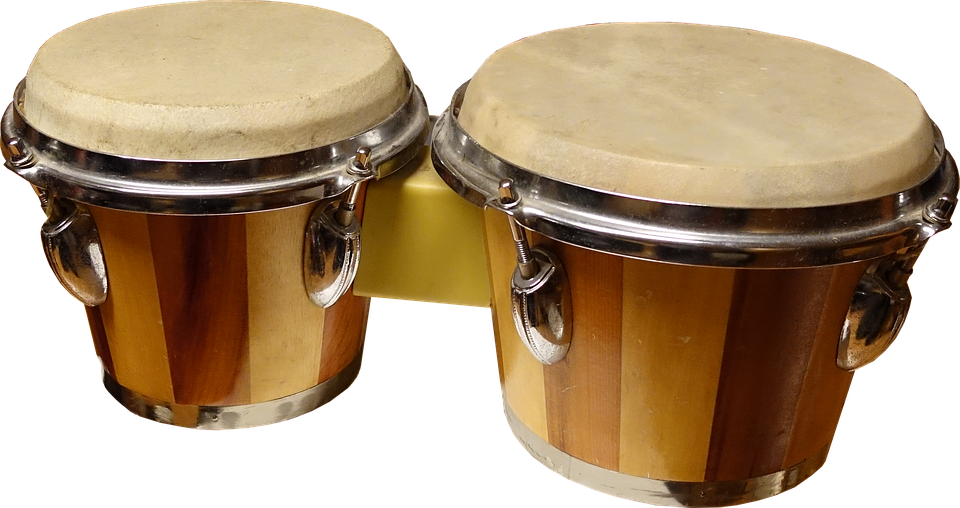The popular social and much sought-after dance (salsa) would not have been more fascinating to watch if not for the Afro-Cuban percussion instrument bongo.
The bongo is a pair of small drums of different sizes; they are called hembra and macho. The hembra is the bigger size which means female in Spanish and the macho…Well, you guessed it; it is the smaller size which stands for a male. The bongo drums are connected, and they are played as one.
Origin of the bongo drums
There is no definite place or region where the bongos originated from. However, during the nineteenth century, the bongo was first recorded in Eastern Cuba (Orient Province); the bongo is used in musical genres like nengón, changüí and as well as the Cuban son. The bongo has a high pitch but soft, beautiful sound.
Some historians who studied the Afro-Cuban culture and tradition insisted that the drums originated from the Yoruba culture (Nigeria) while others claimed it was from the Central African drum models due to the bongo’s open bottoms. One thing they both agreed on was that the bongo came from Africa. The presence of Africans (Angolans and Congolese) in the Eastern Cuba makes the theory plausible.
Furthermore, the Cuban son music style is a combination of African and Spanish music from the Eastern part of Cuba. Although we can conclude that the drums are of the African descendant, but we cannot ignore the fact that the beautiful pair of drums we enjoy today was influenced and modified in Cuba.
How to play the bongo drums
There are four things you need to know before playing the bongo;
- The sitting position
- The open tone
- The Slap
- The heel tip movement
- The basic muted tone
Watch this video for more tips:
The sitting position: customarily, you put the bongos between your legs; ensure the macho is on your left.
The open tone: to get the open tone, you need to beat the edge of the drum with your palm (the joints connecting the fingers to the hand) bounce your fingers off the head.
The slap: to make you sound like a pro, slightly curve your fingers as you hit the drumhead. Once your hand touches the drumhead, flatten them and let them bounce off.
The heel tip movement: you need to place your hand on the drumhead and sway your palm (from the heel to the tip of your fingers)
The basic muted tone: This is similar to the open tone, but instead of removing your fingers relax your palm on the drumhead to give a muted tone.
Getting the right bongo
Learning how to play the bongo drum is great, but learning will not be easy and fun if you do not have the right bongo drums.
Over the years, the bongo drums have gained popularity all over the world so buying Bongo drums won’t be a problem. However, buying the right bongos might pose as a challenge.
You can get an affordable yet durable bongo drums within the range of $50 (dollars) to $500 (dollars). Furthermore, if you plan on playing your bongo drums always or you want to take it as a profession. It is advisable to study the bongos and invest in them.

